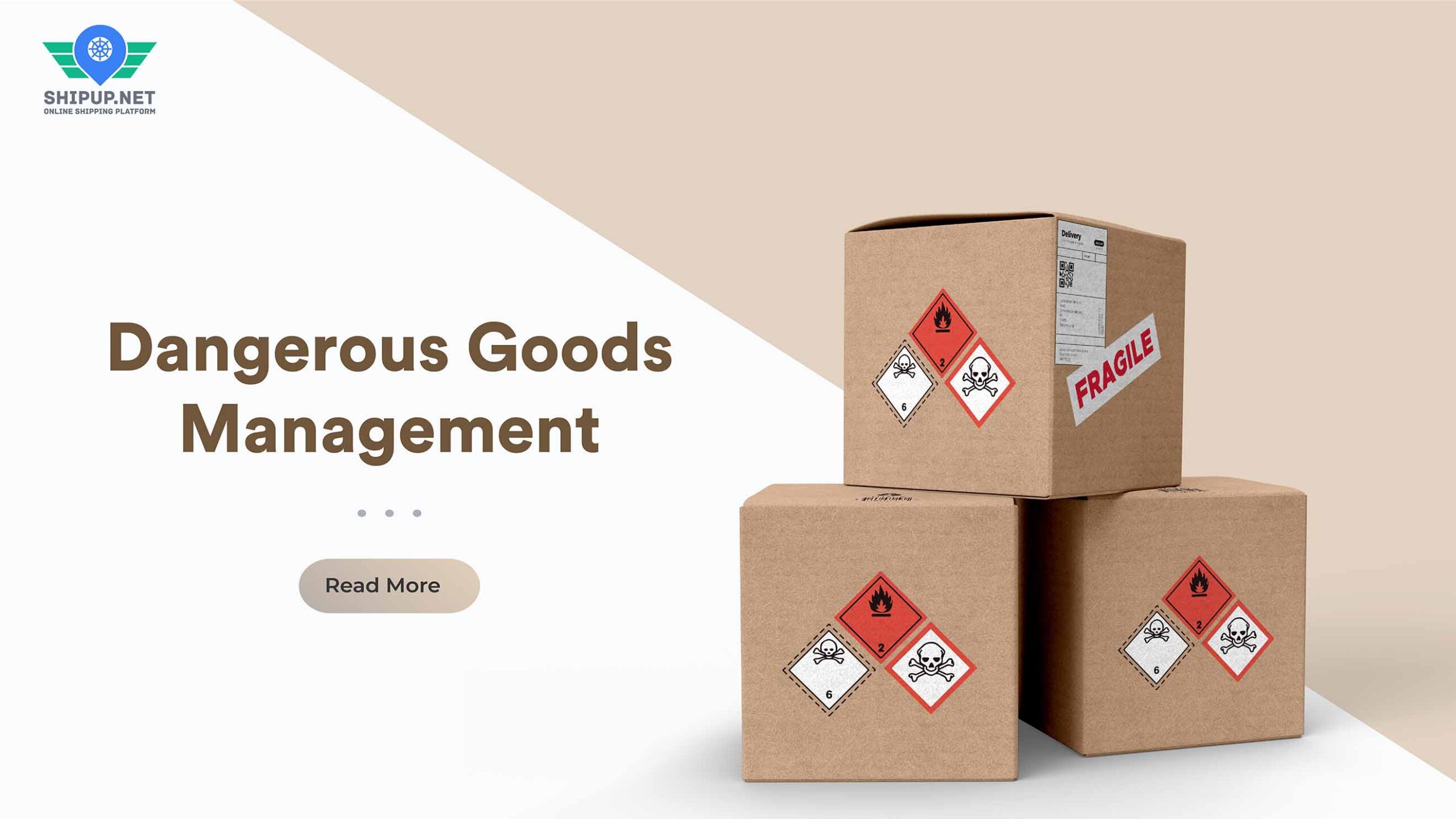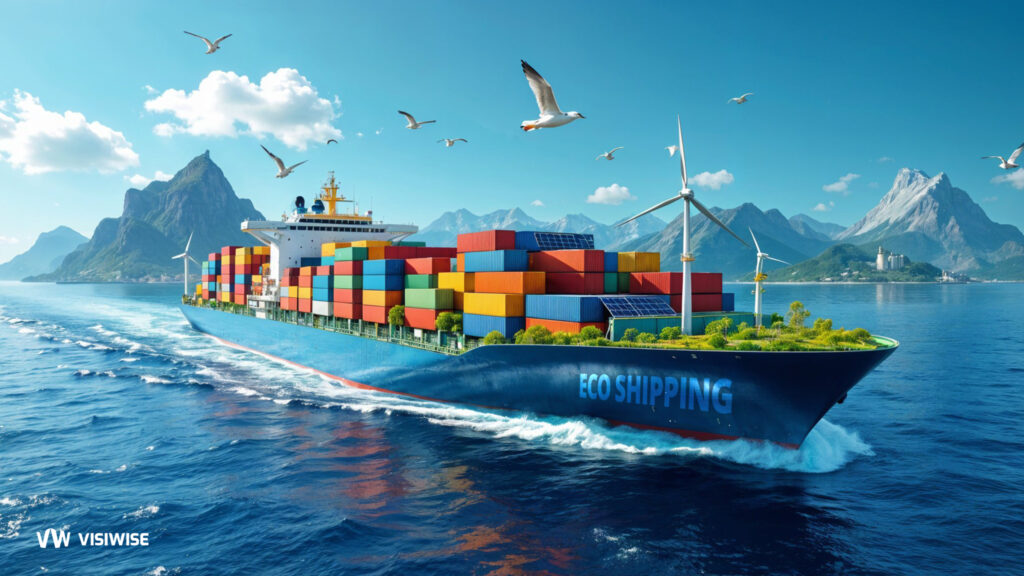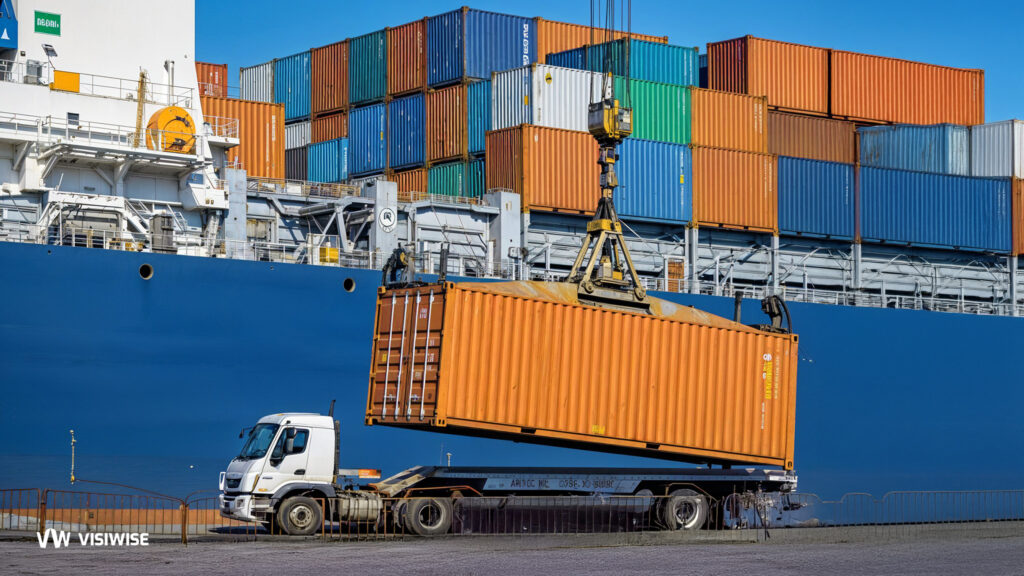Dealing with dangerous goods can be a real headache for people who work in shipping industry. These dangerous goods and substances can be a threat to human health and the environment, so it’s important to consider the best practices to handle, store, and transport them. The most important thind is to manage the whole process safely and in line with the rules. That’s what we mean by dangerous goods management. Visiwise is a platform for tracking and managing all the shipments, but there are a bunch of extra benefits when it comes to dangerous goods.
The primary goal is to keep accidents and incidents from happening during transportation, storage, and handling and there are things to know about it. Let’s see!
Importance of proper Dangerous Goods Management
Dangerous goods management is crucial in ensuring the safety of crew and the environment. Improper handling of these goods will lead to serious accidents. You can imagine fires, explosions, and releases of toxic chemicals, which lead to harming people and the environment. We are talking about oceans and millions of creature who live in there. Also, we all feed from nature and there is no way we risk it.
Moreover, if you don’t care about the considerations, it can result in hefty fines, penalties, and legal liabilities for businesses, which can impact the reputation and financial stability of the compy. Therefore, it is crucial for businesses to implement effective dangerous goods management practices to minimize risks and ensure compliance with regulations and laws.
Overview of shipment management systems and how they help with Dangerous Goods Management
Shipment management systems are tools designed to help businesses manage their shipments, including those of dangerous goods. These systems provide businesses with visibility into their shipments and allow them to track their progress, manage inventory, and ensure compliance with regulations. For dangerous goods management, these systems provide businesses with the tools they need to manage and monitor their dangerous goods shipments, including real-time tracking, real-time alerts, and reporting. This helps businesses to minimize risks, improve safety, and ensure compliance, making dangerous goods management more efficient and effective.
What are Dangerous Goods?
Definition and explanation of dangerous goods
Dangerous goods refer to any substance or material that is classified as hazardous based on its physical and chemical properties. These goods have the potential to pose a significant threat to human health and the environment, making it important to manage them properly. Dangerous goods include items such as chemicals, gasses, flammable liquids, radioactive materials, and biological substances, among others.
Essential Resources to Learn about Dangerous Good
When it comes to understanding the different classes of dangerous goods in shipping, there are several key resources that provide comprehensive information and guidelines. These include the UN Recommendations on the Transport of Dangerous Goods – Model Regulations, the IMDG Code, the IATA Dangerous Goods Regulations (DGR), ADR, and RID.
The UN Recommendations on the Transport of Dangerous Goods – Model Regulations is a publication produced by the United Nations that provides a comprehensive guide to the classification, labeling, packaging, and transportation of dangerous goods.
The IMDG Code, on the other hand, is the primary resource for shipping dangerous goods by sea and provides guidelines for the safe transport of hazardous materials.
The IATA Dangerous Goods Regulations (DGR) provides guidelines for the air transport of dangerous goods and includes information on the classification, packaging, labeling, and handling of dangerous materials. Meanwhile, the 49 CFR Parts 100-185, also known as the Hazardous Materials Regulations (HMR), provide guidelines for the ground transportation of dangerous goods in the United States.
Finally, ADR governs the road transport of dangerous goods within Europe, and RID provides guidelines for the rail transport of hazardous materials across international borders.
These resources are essential for anyone involved in the shipping of dangerous goods and provide comprehensive information on hazardous materials. You can always refer to these books to learn more about the different classes of dangerous goods and stay up to date with industry standards and regulations.
Classifying the Hazard: An Overview of Dangerous Goods Classes
Dangerous goods are categorized into different classes based on the type of hazard they pose during transportation. The purpose of these classifications is to provide clear and consistent guidelines for the safe handling, packaging, and labeling of these materials.
The following are the main classes of dangerous goods and some examples:
Explosives: This class includes items such as dynamite, fireworks, and ammunition. These goods pose a risk of explosion and must be handled with care.
Gases: This class includes items such as compressed air, liquefied petroleum gas, and refrigerants. These goods pose a risk of fire or explosion and require special packaging and handling procedures.
Flammable liquids and solids: This class includes items such as gasoline, alcohols, and certain types of plastics. These goods pose a risk of fire and must be handled and packaged with care.
Oxidizing substances and organic peroxides: This class includes items such as bleach and certain types of hair dyes. These goods can contribute to the ignition of other materials and require special packaging and labeling.
Toxic and infectious substances: This class includes items such as pesticides, medical waste, and certain types of chemicals. These goods can be harmful to humans and the environment and must be handled and packaged with care.
Radioactive materials: This class includes items such as medical isotopes, smoke detectors, and certain types of mineral samples. These goods emit ionizing radiation and require special handling and packaging procedures.
Corrosive substances: This class includes items such as battery acid, certain types of cleaning agents, and pesticides. These goods can cause harm to humans and the environment and must be handled and packaged with care.
Miscellaneous dangerous goods: This class includes items such as magnetized materials and miscellaneous articles that pose a hazard during transportation. These goods may not fit into the other classes and must be handled and packaged with care.
It is important to note that within each class, there may be subcategories and specific packaging and labeling requirements for different types of dangerous goods. It is crucial to consult the relevant resources and guidelines for the transportation of dangerous goods to ensure safe and compliant handling and transport of these materials.
Regulations and laws surrounding dangerous goods transportation
The transportation of dangerous goods is regulated by various international, national, and local authorities, including the United Nations, International Civil Aviation Organization, and International Maritime Organization, among others. These regulations aim to ensure the safe and compliant transportation of dangerous goods, including the proper labeling, packaging, and documentation of these goods.
Businesses must be aware of these regulations and ensure that they are in compliance, as failure to do so can result in serious consequences, including fines, penalties, and legal liabilities. The best approach that professional companies take is to work based on the books and resources we mentioned above. They are the main resources for every logistics expert and help you figure out about the details.
The challenges of Dangerous Goods Management
The dangers posed by dangerous goods
The dangers posed by dangerous goods are significant and can have far-reaching consequences if not managed properly. Accidents involving dangerous goods can result in fires, explosions, releases of toxic chemicals, and harm to human health and the environment. These dangers make it important for businesses to implement effective dangerous goods management practices to minimize the risks posed by these goods.
Complex regulations and laws surrounding dangerous goods transportation
The transportation of dangerous goods is regulated by a complex web of international, national, and local regulations, making it difficult for businesses to ensure compliance. These regulations cover everything from labeling and packaging to documentation and reporting, and can be difficult to navigate, especially for businesses that are new to the transportation of dangerous goods.
The difficulty of tracking and managing dangerous goods shipments
Tracking and managing dangerous goods shipments can also be challenging due to the complex nature of these shipments. These shipments often require real-time tracking and monitoring, and the ability to quickly respond to any incidents or accidents. This can be difficult for businesses without the proper tools, making it important for them to implement effective shipment management systems to ensure that they are able to track and manage their dangerous goods shipments effectively.
Key Considerations When Shipping Dangerous Goods
Shipping dangerous goods comes with its own set of unique challenges, making it crucial for importers, exporters, and freight forwarders to be well-informed and prepared. From regulatory compliance to carrier selection, here are the key considerations to keep in mind when embarking on a dangerous goods shipping journey:
Comply with regulations
Dangerous goods are subject to a web of laws and regulations, both domestically and internationally. Make sure all parties involved in the shipping process are familiar with the relevant regulations, and ensure that the shipment is in full compliance to avoid any potential legal consequences.
Pack it right
Proper packaging and labeling are the cornerstone of safe dangerous goods transportation. Make sure the packaging and labeling meet the relevant standards and regulations, and educate all parties involved on these requirements
Protect your liability
Shipping dangerous goods comes with a heightened level of risk. Consider the potential for liability and make sure the contract specifies who is responsible for the shipment and what insurance coverage is in place.
Plan for the worst
Emergencies can happen at any time, and it’s essential to have a response plan in place. Specify who is responsible for emergency response planning and how the response will be coordinated in case of an incident.
Document your journey
Documentation plays a critical role in the shipping process for dangerous goods. Specify what documentation is required and who is responsible for preparing and maintaining it in the contract.
Choose your carrier wisely
When selecting a carrier for dangerous goods shipping, it’s crucial to consider the carrier’s experience and capability. Make sure the carrier is familiar with the relevant regulations and has a proven track record of safe and compliant shipments.
Budget for the journey
Dangerous goods shipping comes with a higher price tag, so make sure the contract specifies who is responsible for covering the costs involved.
By taking these key considerations into account, importers, exporters, and freight forwarders can navigate the high-risk dangerous goods shipping with confidence and success.
Benefits of using a shipment management system for Dangerous Goods Management
Improved visibility and real-time tracking
Shipment management systems provide businesses with real-time visibility into their dangerous goods shipments, allowing them to track their progress and respond to any incidents or accidents quickly.
This improved visibility helps businesses to minimize risks and ensure that their shipments are being handled in a safe and compliant manner. In addition, real-time tracking allows businesses to keep track of their dangerous goods shipments in real-time, providing them with peace of mind and reducing the risk of incidents or accidents.
Streamlined compliance with regulations and laws
Shipment management systems help businesses to ensure compliance with the complex web of regulations surrounding the transportation of dangerous goods. These systems provide businesses with the tools they need to manage and monitor their dangerous goods shipments, including real-time tracking, real-time alerts, and reporting. This helps businesses to ensure that their shipments are being handled in a safe and compliant manner, and reduces the risk of fines, penalties, and legal liabilities.
Improved efficiency and cost savings
Using a shipment management system for dangerous goods management can also help businesses to improve their efficiency and save money. These systems streamline the process of tracking and managing dangerous goods shipments, reducing the time and resources required to manage these shipments manually. In addition, improved efficiency can lead to cost savings, as businesses can minimize the risks associated with dangerous goods transportation, reduce the risk of incidents or accidents, and avoid the costs associated with fines, penalties, and legal liabilities.
What Can Visiwise Do for Better Dangerous Good Management?
Visiwise, as a shipment visibility platform, can do a lot more for you in case of dangerous good management. For exapmle, you can simply tag and label your shipments by their materials. Adding a tag named “dangerous goods” can help you sort and filter your shipments in different views and categories.
You can share all your documents in a workspace and keep them safe for ever. Also, there is a map view for your shipments that shows the vessels and shipments on a live map view. You can have a better experience of visibility and check the exact location of your dangerous good shipment. They are somewhere on the ocean, You can find them and see their ETA and other tracking information that matters.
In conclusion, proper dangerous goods management is crucial in ensuring the safety of people and the environment. The transportation of these goods is regulated by a complex web of international, national, and local regulations, making it difficult for businesses to ensure compliance.
However, shipment management systems provide businesses with the tools they need to manage and monitor their dangerous goods shipments, improving visibility, ensuring compliance, and improving efficiency. By using these systems, businesses can minimize the risks associated with dangerous goods transportation, reduce the risk of incidents or accidents, and avoid the costs associated with fines, penalties, and legal liabilities.
Choosing the Right Shipment Management System for Dangerous Goods Management
Features to look for
When choosing a shipment management system for dangerous goods management, it’s important to consider the features that are most relevant to your needs. Some of the key features to look for include real-time tracking, alerts, and reporting, as well as the ability to manage and monitor shipments in real-time. In addition, it’s important to consider the level of customization and flexibility offered by the system, as well as its compatibility with existing systems and processes.
The importance of customer support
In addition to the features offered by a shipment management system, it’s also important to consider the level of customer support provided by the vendor. This includes access to technical support, training and resources, and ongoing customer support. A strong customer support team can help businesses to ensure that they are using the system effectively and efficiently, and can help to minimize any disruptions or downtime.
The benefits of using Visiwise Visibility Platform for Dangerous Goods Management
Visiwise Visibility Platform is a comprehensive shipment management system designed specifically for dangerous goods management. This system provides businesses with real-time tracking, alerts, and reporting, as well as the ability to manage and monitor shipments in real-time. In addition, Visiwise Visibility Platform is highly customizable and flexible, allowing businesses to tailor the system to meet their specific needs. Finally, Visiwise Visibility Platform provides businesses with access to a dedicated customer support team, helping them to ensure that they are using the system effectively and efficiently.
Conclusion
In conclusion, choosing the right shipment management system for dangerous goods management is crucial in ensuring the safe and compliant transportation of these goods. The right system should offer real-time tracking, alerts, and reporting, as well as the ability to manage and monitor shipments in real-time. In addition, it’s important to consider the level of customer support provided by the vendor, as well as the customization and flexibility of the system. With these considerations in mind, businesses can choose the right shipment management system to meet their needs and ensure the safe and compliant transportation of dangerous goods.



